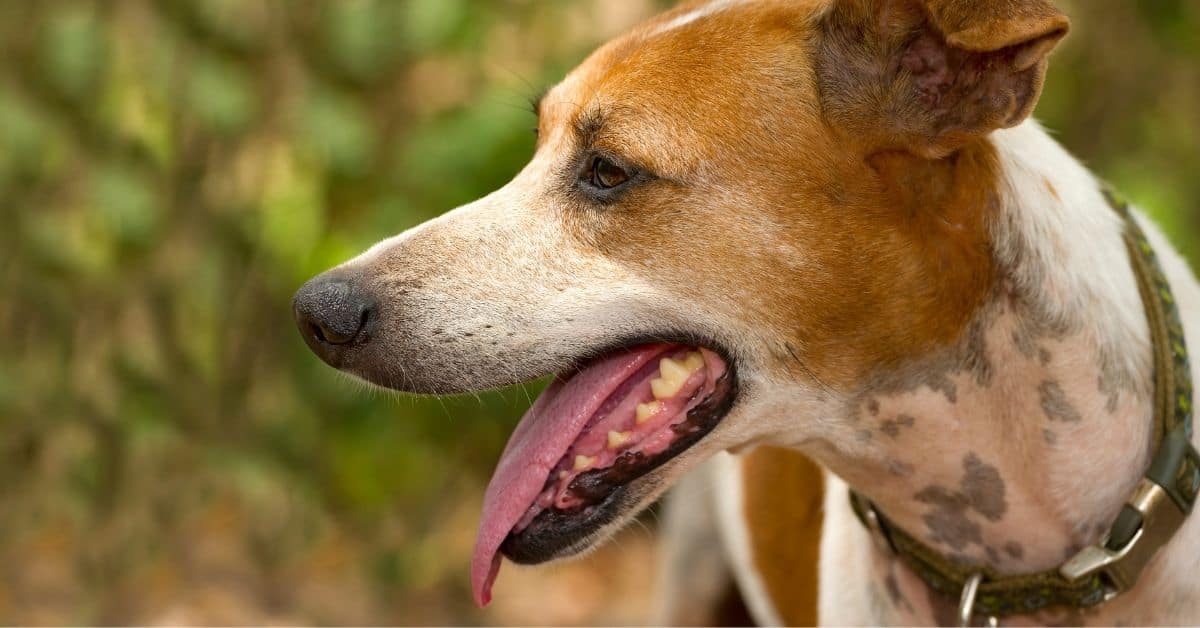Panting is a typical activity most frequently linked to a dog’s need to regulate body temperature.
What should you do if you see your dog panting and pacing restlessly around the house or lawn?
Besides cooling, a dog’s panting can have other reasons.
Restless and panting are general signs that could point to various behavioral or physiological problems in your dog.
A visit to your veterinarian will probably be necessary to interpret such signs.
Your veterinarian can make a more accurate diagnosis of your dog’s condition if you pay close attention to your dog for any additional symptoms and note when and how frequently the panting and restless occur.
As you know now the answer to the question “why is my dog panting and restless”, continue reading to get more information.
Here are the most common reasons why your dog is panting and what you can do about it.
Why Is My Dog Panting And Restless? – 20 Reasons Why
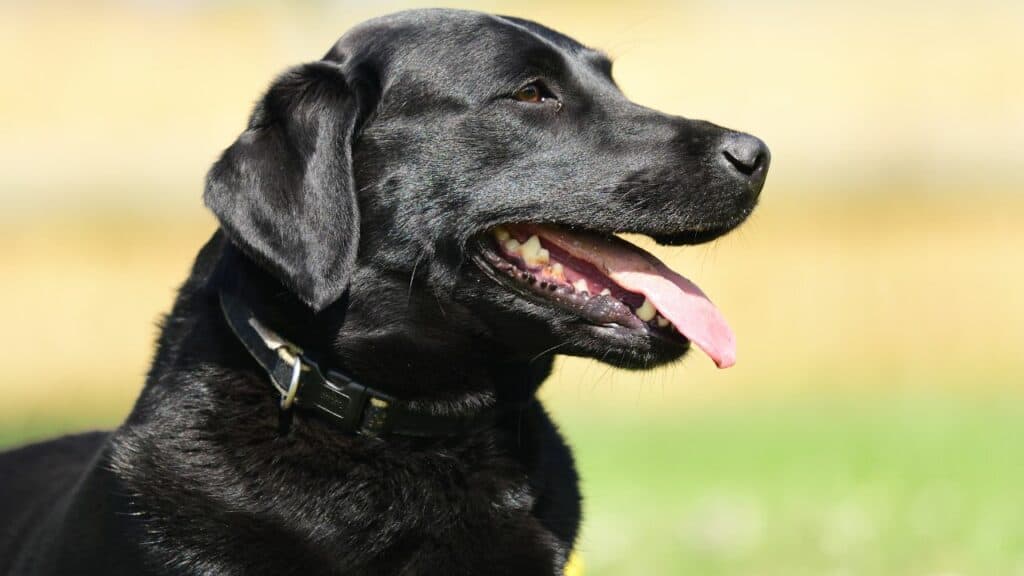
Depending on the dog’s health issues, breed, and other environmental factors, these behaviors may be entirely specific.
1. Exercise
Heavy exercise is the leading cause of panting and agitation in dogs.
Like humans winded after vigorous exercise, dogs may pant when engaged in vigorous activity.
While prolonged panting periods in athletic dogs can be reduced, they may still suffer panting after a strenuous workout.
After a game of fetch, your pet may start to pant.
Panting is typically very natural.
They might continue hyperventilating for a while, especially in hot weather.
After the play session, if your dog continues to pant excessively for a long time, it is recommended to call your veterinarian.
2. Anxiety And Fear
Like people, our dogs occasionally experience anxiety.
We frequently observe signs of nervousness in dogs, such as panting, pacing, shivering, whimpering, pawing, and more, resulting from their inability to express their feelings.
That is one of the most frequent causes of dogs’ panting, pacing, and general expression of confusion.
Any alteration to their regular pattern or environment can cause anxiety in older dogs, leading to excessive restlessness.
He may also act confused and lick himself repeatedly and have heavy panting.
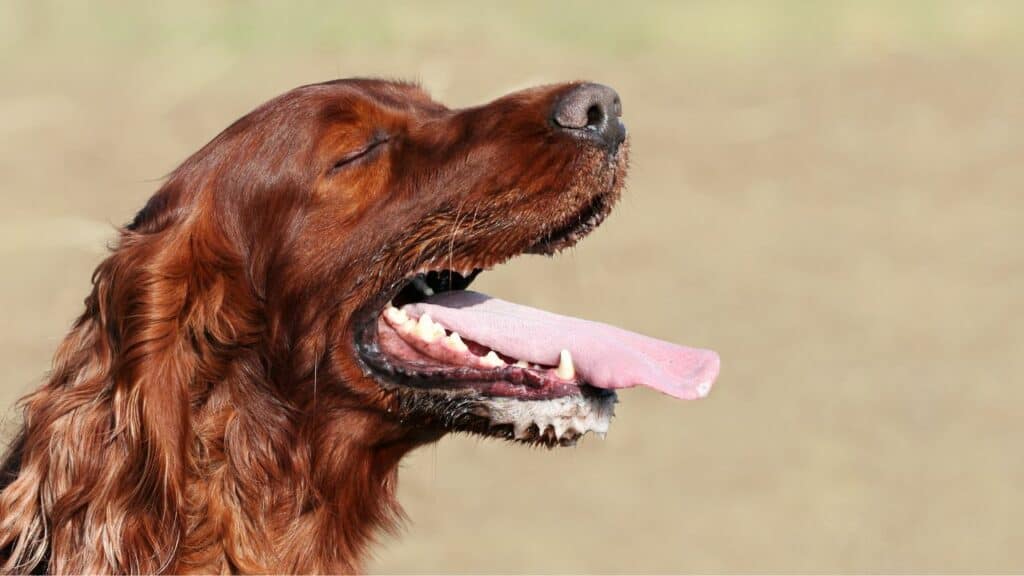
3. Respiratory Issues
Your pup may be experiencing a respiratory issue if they are panting, breathing quickly, restless, or pacing.
Your dog’s age and breed, along with additional symptoms like coughing, may help your vet assess whether panting and pacing are signs of a respiratory condition in your dog.
Infectious respiratory illnesses like kennel cough can affect any canine. Brachycephalic airway disease, which is common in flat-nosed breeds like French Bulldogs and Pugs, is a condition that can affect them.
To identify and treat your dog’s breathing condition, your veterinarian might advise diagnostics like radiography or even send you to a specialist.
4. Laryngeal Paralysis
The larynx has a significant impact on canine vocalization and feeding behavior.
A dog should breathe by opening and closing its larynx.
The larynx enables the pup to bark whenever they want and stops them from eating while inhaling any food.
Laryngeal paralysis sometimes referred to as LAR PAR, is a condition in which a dog’s larynx can only partially perform its regular functions.
The larynx implies that either vocal cords do not open during rapid breathing, increasing the likelihood that they will aspirate food when eating.
LAR PAR may be the reason for your dog’s excessive panting, change in bark, loud noises, honking sounds, loss of breath, coughing, or other abnormal behavior.
5. Neurological Disease
To rule out any medical or neurological disorders like encephalitis, an infection, or brain inflammation, your veterinarian may advise an MRI or CT scan if your dog is panting and pacing, especially at night.
Seizures, neck stiffness, “drunk walking,” and a tilted head indicate that a neurologic disorder may be the source of your dog’s panting and pacing.
A brain tumor is another potential neurological condition for your dog’s behavior.
The cause of your dog’s neurological ailment will determine how it is treated.
While a brain tumor may require surgery or radiation therapy, encephalitis is often treated with medications.
6. Heat Stroke
Hyperthermia, often known as heat stroke, can be potentially fatal.
Heavy panting and restless pacing are early signs of heat stroke.
Without treatment, these early symptoms might worsen, and you might start noticing your pup acting shaky or experiencing respiratory problems.
The dog has a dangerous heat stroke when the dog’s body temperature exceeds 105°F.
That can occur when a pup is left in a car, exercised outside in the heat, or left out in the sun without enough shade.
Short-nosed or brachycephalic breeds like Bulldogs and Pugs, prone to overheating because they cannot move efficiently, dogs pant, and cool themselves, should be handled with extra caution.
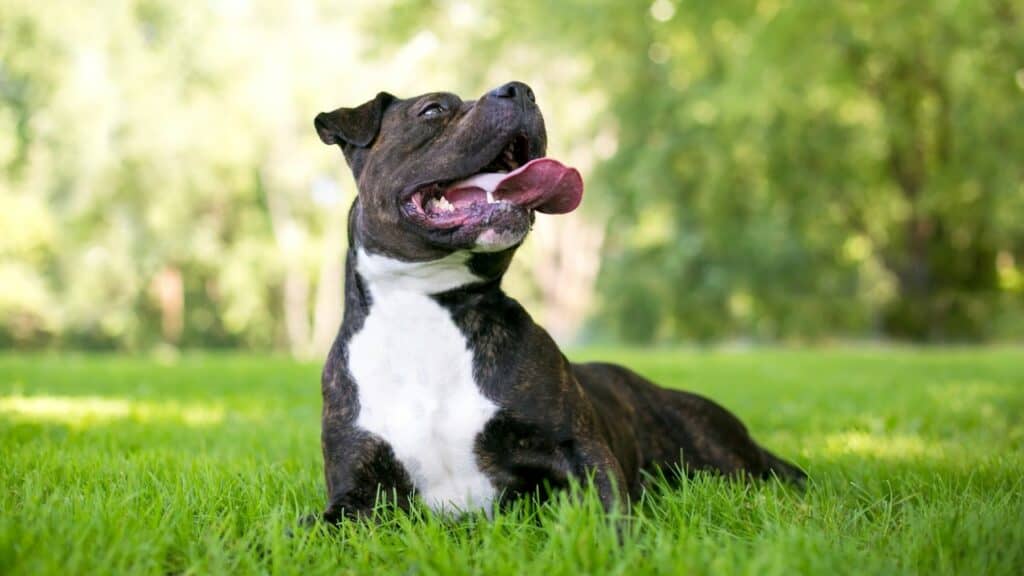
Furthermore, dogs with specific medical issues, such as obesity or heart disease may be particularly susceptible to heat exhaustion.
7. Heart Disease
Dog’s heart disease manifests itself in various ways, including trouble breathing, coughing, belly swelling, and appetite loss.
You may observe panting and pacing in your dog as a symptom of heart illness, along with anxiety brought on by trouble breathing, weakness, and low oxygen levels.
8. Vision Loss
Unlike humans, dogs rely less on their sense of sight to get about.
It can be challenging to identify that your dog is experiencing vision loss because their senses of smell and hearing are so much more essential to them.
A dog’s ability to see at night frequently deteriorates first.
Reduced vision may be why your dog paces and pants heavily when the lights go off, showing clinical signs of distress.
Your veterinarian will take a physical exam of your dog’s eyes to see whether a treatable ophthalmic disease is the root of the problem.
If not, your veterinarian determines how to assist your dog in adjusting to losing its vision.
9. Medication Side Effects
Does your dog use any prescribed medications?
Certain medications can cause panting, pacing, and restlessness as side effects.
Prednisone is one of these drugs, as are other glucocorticoids.
Like people, different dogs have varying reactions to the same drugs.
Your dog might slow pace and pant as they metabolize sedatives or narcotic painkillers if given to them for a surgical or medical procedure.
Even if the drug is prescribed correctly and provided, it is still possible for your dog to experience an adverse reaction to it.
Call your veterinarian if your dog exhibits unusual behavior after receiving any medication, such as heartworm or flea and tick prophylactic, such as heavy panting and pacing.
10. Separation Anxiety
Dogs can pace and pant excessively as a way of expressing their anxiousness.
Separation anxiety, sometimes known as the fear of being alone, is a prevalent form of anxiety.
These anxious dogs could develop unhealthy attachments to you or another human they live with.
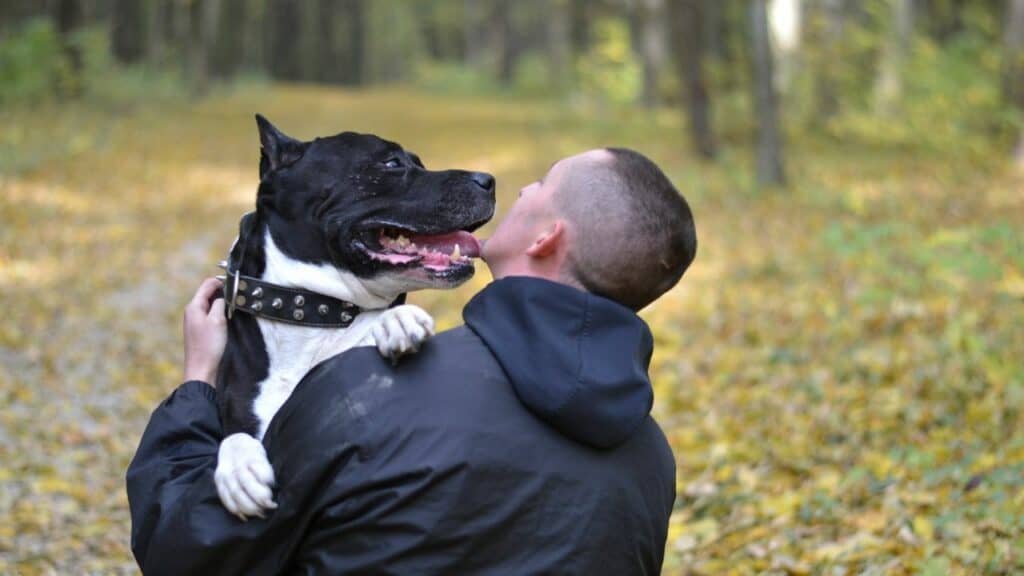
Since you can’t always bring your dog with you wherever you go, separation anxiety can be a challenging trait to control.
Dogs with separation anxiety may pace and pant excessively, vocalize excessively, engage in destructive behaviors, or have accidents inside the home.
Before identifying separation anxiety in your dog, your veterinarian will rule out any underlying medical conditions—treatment options for separation anxiety range widely, including drugs, behavioral adjustments, and environmental improvements.
In difficult situations, your vet might suggest you and your dog visit a veterinary behaviorist.
11. Storm Phobia
Does the arrival of a yearly storm always coincide with your dog’s panting and pacing?
If so, your dog may have storm phobia, a common condition marked by a dread of thunderstorms.
Because their superior hearing and confident dogs are frightened of storms, some dogs will become concerned before the first rumble reaches their pet parent’s ears.
These dogs may react to thunder and other storm warning indicators, including darkening skies, lightning, and barometer shifts.
13. ognitive Dysfunction
The panting and pacing of an elderly dog may indicate canine cognitive dysfunction, especially if it happens most often at night.
Aging-related brain alterations result in cognitive dysfunction.
Other symptoms that your dog may display include:
Confusion
Losing its housetraining, odd vocalization
Losing interest in routine activities
Less engagement with you and other family members
12. Anemia
A severe reduction of red blood cells is called anemia.
In the bloodstream, red blood cells transport oxygen throughout the body.
When the body lacks oxygen, it starts to malfunction.
The dog will appear disoriented, have light pink or white gums, refuse to eat, be unable to exercise, and pant while lying around in a debilitated state.
He won’t be able to get oxygen into his body unless he pants excessively and forcefully, just like with heart failure or a heart attack.
Thus pacing the floor of restlessness might not be an issue.
If you observe other signs, take her to the veterinarian immediately.
13. Cushing’s Disease
Your dog’s adrenal glands produce too much cortisol, leading to cushing’s disease or hyperadrenocorticism.
Sometimes a pituitary gland tumor stimulates the adrenal glands, causing them to overproduce.
In addition to excessive sweating, cushing’s illness is characterized by weight gain, hair loss, excessive drinking, urination, and behavioral abnormalities.
As a result of the discomfort brought on by these clinical indications, your dog may pant and pace.
As your dog will need to go outside to urinate more frequently than average and may become anxious, increased water consumption may also contribute to these symptoms.
14. Acute Or Chronic Pain
The signs and symptoms of a dog in discomfort can include panting and restless pacing.
Your dog may resist taking a nap or be unable to relax once he does.
Your dog’s age, breed, and any history of injuries or overexertion will all be taken into account by your veterinarian during a physical examination to rule out discomfort as the source of your dog’s panting heavily.
15. Tooth Pain
Dogs find it difficult to communicate any pain.
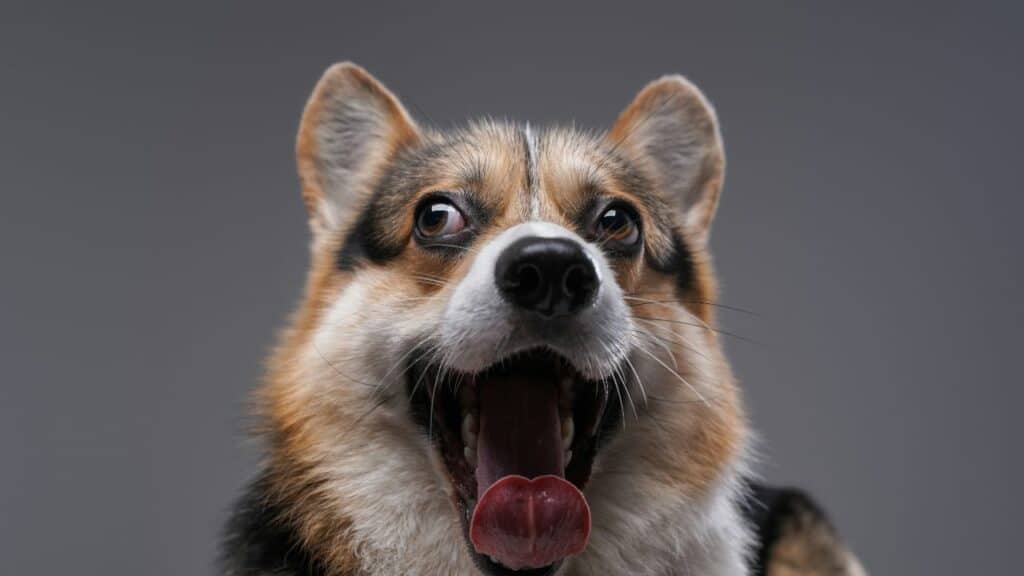
Your dog may seem more restless than usual if they are experiencing tooth pain due to an infected tooth or poorly maintained teeth.
Other habits you could observe include avoiding their preferred chew toys or food.
Although not a life-threatening emergency or medical emergency, dental pain will probably require veterinarian assistance.
Tooth pain can involve performing a root canal or even extracting a tooth.
If a root canal was done, your dog might even have titanium or ceramic crown to cover the tooth.
16. Seizures
One of the most common neurological conditions in our beloved pets is seizures.
Young dogs who have epilepsy exhibit a wide range of aberrant behaviors.
Our dogs may suffer from epilepsy, but as they age, they may also develop other seizure diseases.
These circumstances can greatly discomfort a dog and result in restlessness.
One of its most typical indications is a canine seizure’s altered behavior before or after it.
Serious confusion might result from a stroke or neurological crisis in our canine pals.
As a result, they could become anxious just after the episode.
A dog experiencing a seizure may also shake and convulse violently, panting heavily.
Your dog may be recuperating from an attack if they are gasping profusely and acting differently.
17. Toxicity
It’s possible that the consumption of a toxic substance causes your dog’s panting and pacing if they frequently act like canine garbage disposals and devour anything and everything they can get their hands on.
When consumed, certain human foods and drugs might result in other signs, including panting, pacing, or hyperactivity.
Your dog may become anxious, start panting, and pace if they use Adderall or other veterinary medicine, including amphetamines.
18. Neurological Issues
To rule out any medical, or neurological disorders like encephalitis, an infection, or brain inflammation.
Your veterinarian may advise an MRI or CT scan if your dog is panting and pacing, especially at night.
Seizures, neck stiffness, “drunk walking,” and a tilted head indicate that a neurologic disorder may be the source of your dog’s panting and pacing.
A brain tumor is another potential neurological reason for your dog’s behavior.
19. Gastrointestinal Distress
Your dog may be in discomfort due to various gastrointestinal (GI) problems, as evidenced by panting and pacing.
Diarrhea can make your dog feel uneasy and make him feel the urge to go outside frequently, which makes him anxious.
Pancreatitis, for example, can be excruciatingly painful, which will cause your dog to pace and pant again.
20. Obesity
The increased weight can cause your dog’s panting and pacing behavior if you’ve noticed that it’s just started to put on weight.
Just like in humans, obesity in dogs can lead to a variety of health issues.
Your dog may pant more than usual if extra layers of fat cover its body.
Obesity also puts more stress on your dog’s joints, which may be uncomfortable and account for your dog’s pacing and difficulty settling down.
How To Calm A Dog Who Is Panting?
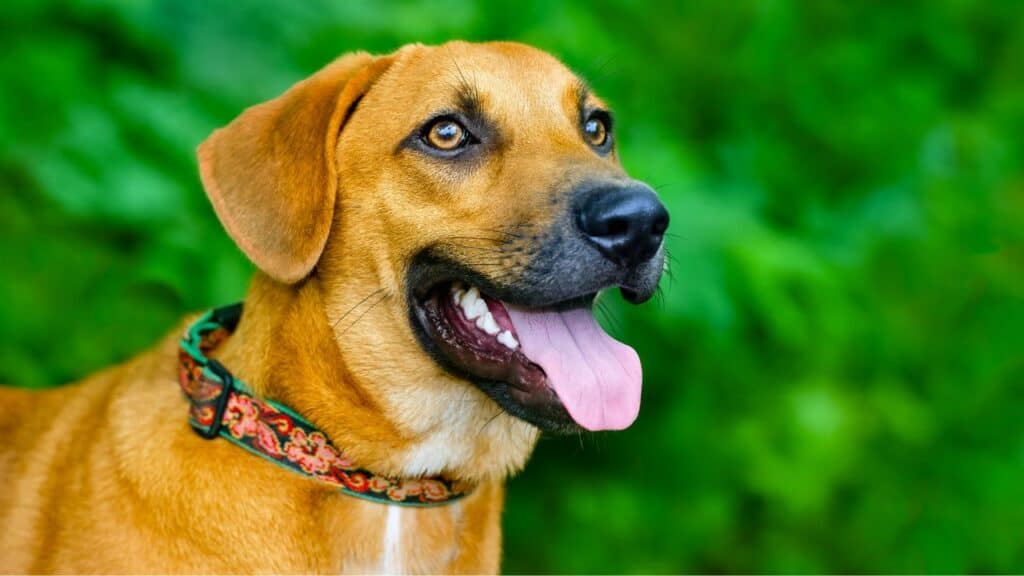
You now know the reasons why your dog is panting.
But what should you do if your dog is panting heavily and can’t stop?
However, unusual panting may be a sign of anything wrong.
Think about some methods for reducing excessive panting and soothing your dog.
Stay Near The Dog’s Side
When dogs are anxious, they frequently pant; keeping you nearby can help them stay calm.
Give The Dog Its Own Safe Space
Allowing the dog to cool off in its area is sometimes the best method to handle anxious panting.
In this scenario, a white noise machine may function in a dimly lit room.
It can also be the dog’s crate, which needs to have blankets scented with something they recognize.
Give The Dog An Anti-Anxiety Wrap
These wraps are applied similarly to swaddling a baby.
They may calm an anxious dog because they give the impression of safety and security.
Offer Your Dog Appeasing Pheromones
Pheromones, especially those emitted by female dogs while feeding their pups, have a calming effect on many dogs.
Pet stores offer these pheromones in bottles.
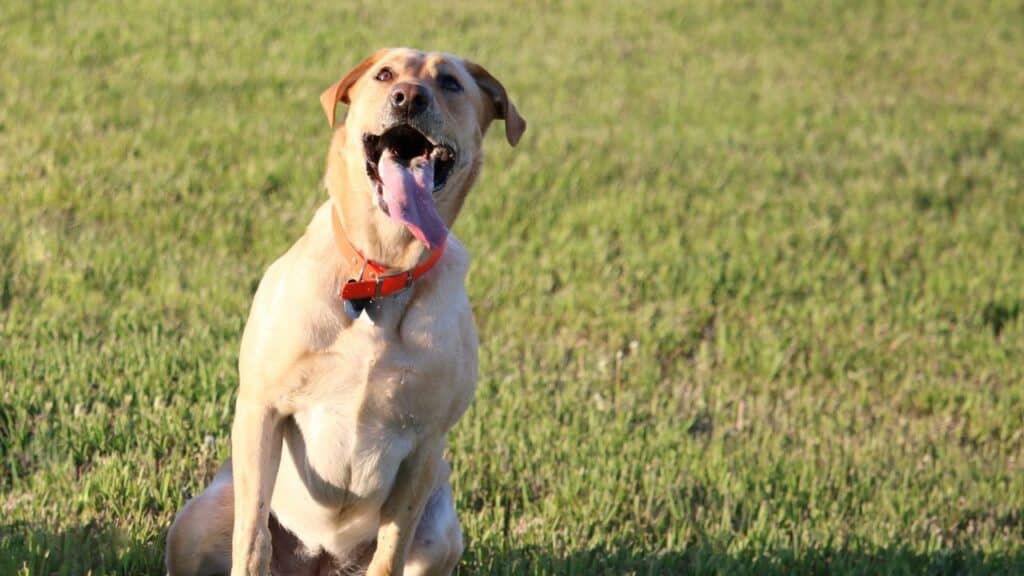
Give Your Dog Supplements
A supplement that contains L-theanine, valerian, chamomile, and milk proteins should be discussed with your vet immediately.
These can reduce cortisol levels and general stress.
When Should You Go To Your Vet’s Office
So when should you take your dog to the vet immediately?
Panting can be shared among our animal friends, making it difficult to determine when it’s appropriate to take professional advice.
Here are some pointers on when it might be relevant to call your veterinarian to understand your dog better moving ahead.
1/2–1 hour after strenuous exertion, your dog is still excessively panting.
After spending some time in the heat, you notice excessive panting and agitation.
If they appear to be having any respiratory distress.
Your dog is panting without doing anything physically active.
You observe indications of anxiety that are interfering with their daily activities.
They exhibit severe behavioral issues or harmful activities as a result of their anxiousness.
If your dog seems exhausted after light exercise.
During physical exertion, your dog appears lethargic or falls over.
In addition to their pacing and panting, you have detected suffering indicators.
You have become aware of digestive symptoms.
• Your dog exhibits any respiratory discomfort or heavy breathing symptoms.
• Your dog consumed a recognized poison.
• You’ve observed your dog be off-balance, slow, or bewildered.
It is best to call your veterinarian right away for additional care if your dog is pacing and panting while also exhibiting any of the symptoms mentioned earlier.
Before You Go…
Now you know the answer to the question, “Why is my dog panting and restless?”
If you want to learn more, read the following articles too!

